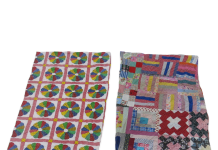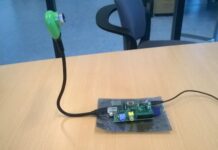Insteon VS Z-Wave, they are both mesh networking technologies.
Unlike WiFi, both these protocols are expressly designed for the home automation market.
If you want some background on Insteon, check out some of the products in our ongoing Insteon sale right here.
Today, we’ll look into the ways in which these protocols differ so you can see which one best gels with the needs of your connected home. If you want another take on Insteon, we pitted this protocol against Zigbee in this head-to-head guide.
Without further ado, we’ll launch into today’s mano-a-mano…
Insteon
Founded way back in 2005, Insteon is a networking topology associated with Home Automation and the Internet of Things.
The proprietary dual-band network, now more commonly called a dual-mesh network, send signals in 2 ways:
- Through the wiring of your home
- Through the Insteon wireless network
With the Insteon ecosystem, devices can be easily networked together using the powerline and/or the radio.
Insteon signals travel much further without interruption than any other technology permits. You can expect substantially more reliable communication than any single-band network can provide.
We’ll highlight the main functionality you can expect from your Insteon network right now.
Core Features of Insteon
- Dual-Mesh Network: With Insteon’s dual-mesh network, messages are transmitted using both wireless signals and the powerline. Although homes today are less and less reliant on wired connections, the dual-mesh can come in very handy with larger properties or when there’s an issue with interference in a building. Multiple pathways mean increased dependability. Also, since every message is repeated (simulcast) by every mains-powered Insteon device in the network, the more devices you add, the more robust the network becomes
- Straightforward Installation: Since communication harnesses the existing powerline along with wireless signals, you won’t need to worry about rewiring when you’re installing Insteon devices. With a unique ID on each device, it will automatically join the network once powered up. A common misconception is that Insteon is tricky to install. The opposite is the case
- Instantaneous Response: The data rate on the Insteon wireless network maxes out at 38Kbps. Messages hit their target in a typical time of 0.05 seconds. You’ll get practically no delay in transmission whatsoever
- Devices Act as Peers: All mains-powered Insteon devices act as peers. Any device can act as a controller, a receiver or a repeater. This gives devices the power to send, receive and relay messages. This enhances the way the signal is routed around the network. Battery-powered devices are not part of this peer-to-peer routing in order to conserve battery life
- Great Security: The unique ID code for Insteon devices protects you from eavesdropping or controlling your devices externally. All messages are fully encrypted to deliver maximum security
Before we push on to examine Z-Wave, take a glance at a snapshot of the leading benefits and the couple of drawbacks of Insteon…
Benefits
- The nature of Insteon’s dual-mesh peer network offers a level of inbuilt redundancy not present with other protocols
- Both backward and forward-compatible for complete flexibility
- You’ll be able to take charge of your Insteon devices physically, using a controller, with an app on your smartphone or with voice commands
- Despite being an older protocol, Insteon is still compatible with a range of more modern devices
- With devices acting as highly efficient repeaters, messages can be pinged to the furthest reaches of your home with Insteon
Z-Wave
Z-Wave is a wireless mesh network used primarily for home automation. It used the 800-900 MHz band of frequencies.
Z-Wave networks can support up to 232 devices in theory, although in practice you might run into problems around the 40 or 50 mark. 4 hops between devices are permitted.
The protocol was created at the end of the 90s by a Danish company, Zensys. The first chipset was launched in 2003 with further iterations improving performance.
The 500 chip series, also known as Z-Wave Plus, was released in 2013.
Z-Wave gained commercial traction in 2005 with the creation of the Z-Wave Alliance.
You’ll be able to control devices and appliances on a Z-Wave network thanks to low-energy radio waves that enable these smart devices to communicate.
You will require a central hub with Z-Wave.
Take a look now at the main features of Z-Wave before we showcase the pros and cons to help you see more easily where this protocol stands and falls.
Core Features of Z-Wave
- Mesh Network: Using wireless signals only, Z-Wave is nevertheless versatile and dependable. The mesh network ensures that signals are routed in the most efficient possible way by intuiting the status of all devices and adapting accordingly
- Mesh Architecture: Multiple devices are linked together and paired to a central hub. You use a smartphone, wall controls, a controller or voice commands to take charge of these devices
- Low-Power Radio: Much like WiFi, Z-Wave technology is based on low-power radios with a range of roughly 100 meters. Small packets of data are transmitted slowly between devices. This protocol is not designed to compete with WiFi where speed is of the essence. The Z-Wave chip fits neatly into small smart devices
- Routing: Z-Wave devices are classified as controllers, slaves and routing slaves. It’s only the controller and the routing slaves that repeat messages. Clearly defined routing tables help Z-Wave devices understand the network set-up to optimize routing. This is key since routing can be complex, especially with larger Z-Wave networks. As with Insteon, only mains-powered devices act as repeaters for the purposes of saving the battery
- Security: Security is uppermost with Z-Wave. With AES 128 now a requirement for Z-Wave certification, any security breach is wildly unlikely
Benefits
- Operating across the 800-900 MHz range of frequencies, there’s very little chance of interference with Z-Wave since it steers clear of the 2.4GHz frequency used by WiFi and many other devices
- Dead spots are few and far between with a Z-Wave mesh network
- Remarkable interoperability with 600 manufacturers in the Z-Wave Alliance providing over 2000 devices. All certified Z-Wave devices work with any Z-Wave controller
- Z-Wave signals can travel up to 100 meters outdoors but indoors with obstructions like walls and ceilings, this is slashed to perhaps 15 meters with obstacles or 30 meters unobstructed
- Allowing up to 4 hops between devices and supporting up to 232 devices in a single network, Z-Wave works well even in larger smart homes
Insteon vs Z-Wave: Similarities
We’ll now glimpse at the few key areas in which Insteon and Z-Wave are broadly similar…
Both protocols use AES encryption so you’ll have no worries about security being compromised on either count.
Hubs and other devices from both Insteon and Z-Wave are supplied with regular firmware updates.
User communities are vibrant for both of these leading protocols.
Insteon vs Z-Wave: Differences
More pertinent are the differences between this pair of protocols…
Insteon devices act as peers. Z-Wave, on the other hand, has controllers and slaves.
There’s no network enrollment step required with Insteon. Devices are automatically detected. This is not the case with Z-Wave.
Where Z-Wave routes messages, Insteon uses simulcasting to propagate messages.
Insteon is a dual-mesh network as outlined above. Z-Wave is a radio-only network with no recourse to power lines. This means you don’t enjoy the same level of redundancy.
Z-Wave commands need to be understood by the controller. Insteon, by contrast, uses Statelink commands that are backward and forward-compatible.
While you can use some Insteon devices for basic functionality without a hub, you’ll need a gateway for Z-Wave devices.
Insteon Scenes kick in without any delay. There’s a slight but noticeable lag with Z-Wave.
The Verdict: Insteon or Z-Wave?
As with all aspects of smart home technology, it’s tough to pin down a one-size-fits-all solution. Indeed, it’s best practice to seek the most personalized and customized connected home so we’re not going to call an outright winner.
Insteon does edge ahead in terms of the robustness of its dual-mesh network. Since Z-Wave is also eminently dependable, though, this is almost academic.
If you want a deeper look into Z-Wave, check out our comparison of Z-Wave VS Zigbee.
If, on the other hand, you’re sold on the idea of an Insteon ecosystem, check out just some of the impressive range of products right here.
And come back soon since all through next week, we’ve got a great deal coming your way in the form of the very smart home news.
The post Insteon vs Z-Wave appeared first on Smarthome Blog.

































